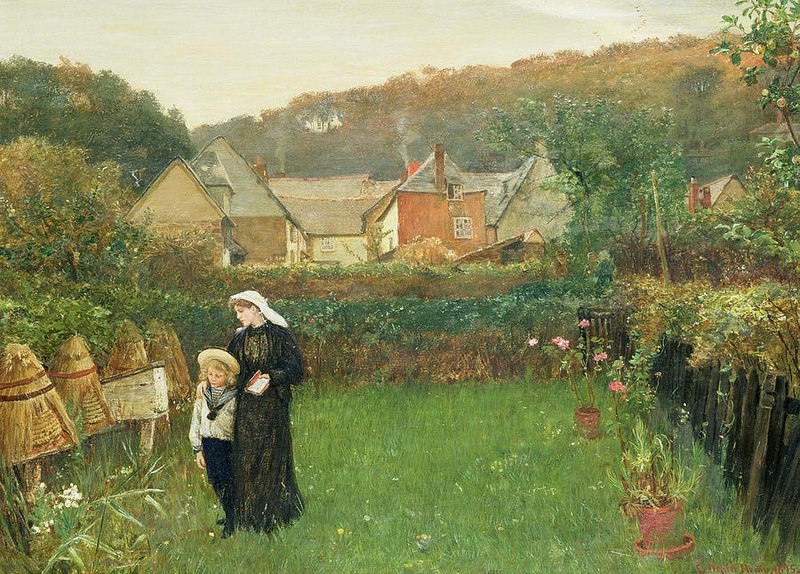Her Majesty Queen Elizabeth is dead. A great and sad loss for the British monarchy. But it’s not only the people who mourn. Hardly anyone knows that many bee colonies also belong to the royal family. The beehives that are located on the grounds surrounding Buckingham Palace and Clarence House were the reigning monarch’s personal bees.
The royal bees were now informed of the death of their mistress with an archaic ritual. This was the job of John Chapple, guardian of the royal bees, who has been looking after the Queen’s bees for a good 15 years. The reason for this odd act is an old superstition known as “Telling the bees” which is still living folklore in English-speaking countries. According to this, bee colonies have to be informed about the death of their master or mistress through a special ritual and dressed in black cloths. If one does not do this, one fears that the bee colonies would follow the deceased into the realm of the dead and die themselves. In the worst case, this could even result in the death of the new master of the bees.
With the saying “The mistress is dead, but don’t you go. Your master will be a good master to you”, the beekeeper told the queen’s bee colonies the sad news after gently tapping on their hives to get the bees‘ attention. He then informed the bee colonies who now is the new master of the bees. In this case, that is the new reigning king, King Charles III. Finally, long black cloths are tied around the beehives. Of course, noble black ribbons, which are tied together with stylish little bows, were used for this royal occasion. These ribbons remain on the hives as long as the funeral ceremonies for the deceased regent continue. This procedure is intended to give the bees an opportunity to mourn the loss of their mistress. John Chapple also asked the bees to be kind to their new master, King Chalres III.

The message must be conveyed to each bee colony personally and individually. In this case, this was a manageable undertaking: The royal bee population consists only of 7 beehives. Two hives are located at Clarence House and five hives at Buckingham Palace.
John Chapple’s path to becoming the royal beekeeper was more of an unplanned accident. One day, the palace gardener unexpectedly invited him by e-mail to talk about bees, the 79-year-old recalls. Chapple initially thought it was a bee problem on the royal estates. It is not uncommon for beekeepers to be contacted about swarms of bees. But the palace had other plans: it was not a question of catching bees, but of acquiring and caring for new bee colonies. The Queen should start to keep royal bees. And without further ado, beekeeper John Chapple was henceforth declared royal beekeeper, who was to take care of Her Majesty’s bees from then on. However, whether he continues to be the guardian of the royal bees under the reign of King Charles III is currently uncertain.
Text: Fabian Kalis
Source: https://www.dailymail.co.uk/news/article-11199259/Royal-beekeeper-informed-Queens-bees-HM-died-King-Charles-new-boss.html